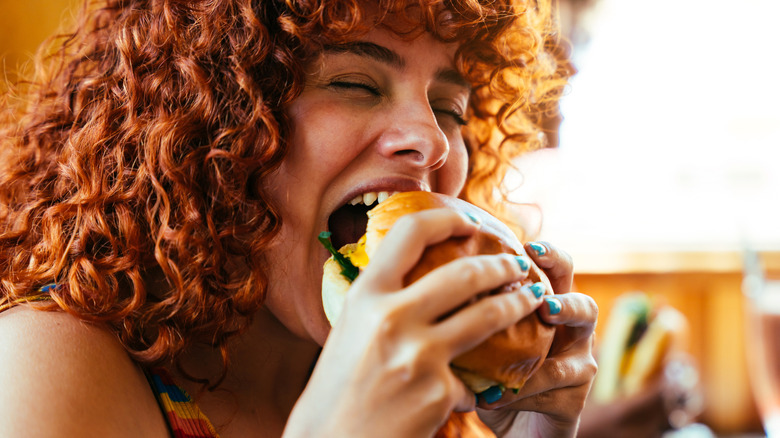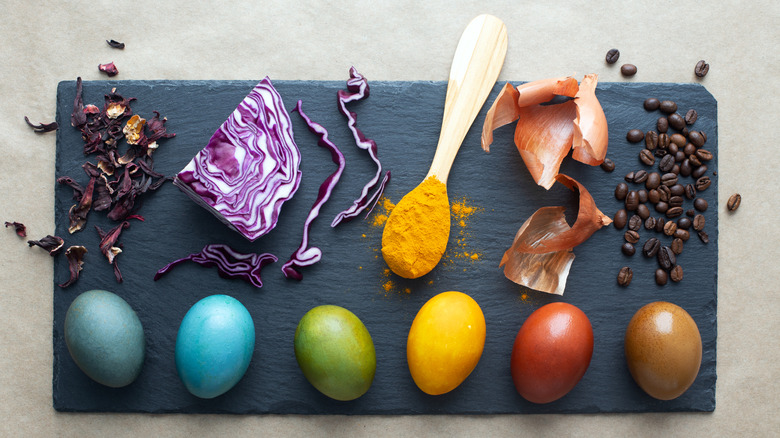The Fast Food Restaurant Chain That Had To Change Its Menu After Robert F. Kennedy Jr's New Food Rule
As part of Health and Human Services Secretary Robert F. Kennedy Jr.'s mission to Make America Healthy Again, he announced a plan in April to phase out artificial dyes from foods. Petroleum-based dyes such as Citrus Red No. 2 and Orange B will be banned within a few months, and six other synthetic dyes are set to be eliminated by the end of 2025. The Food and Drug Administration revoked its approval of Red 3 in January. Food manufacturers are being asked to replace these dyes with natural ingredients.
The plan has prompted In-N-Out Burger to adjust some of the ingredients in its current menu. In an Instagram post, the company said it has replaced the Red 40 dye in its Strawberry Shake and Pink Lemonade with beta carotene and vegetable juice. Red 40 is one of the dyes scheduled to be phased out by the end of the year.
"These poisonous compounds offer no nutritional benefit and pose real, measurable dangers to our children's health and development," Kennedy said. The FDA is also partnering with the National Institutes of Health to look more closely at the effects of food additives on human health.
How food dyes may affect health
Food manufacturers often add synthetic coloring to foods and drinks to make them more visually appealing. For example, mint chocolate chip ice cream may be dyed green, even though peppermint oil is clear. While the FDA requires evidence that a color additive is safe, emerging research raises concerns about how these synthetic dyes may impact health, especially in children. Some of these food additives are already banned in Europe, but not in the United States.
A 2024 review in the International Journal of Environmental Research and Public Health examined 15 studies on the effects of synthetic food colors in relation to autism spectrum disorder (ASD) and attention deficit hyperactivity disorder (ADHD). Some of these dyes have been shown to damage the kidneys and liver and cause oxidative stress in cells, which may contribute to neurodevelopmental problems in children. Certain additives, particularly Red 3 and Yellow 5, may worsen ADHD symptoms.
Petroleum-based food dyes can also contain trace amounts of heavy metals such as mercury, arsenic, lead, and cadmium. These metals can interfere with the body's ability to absorb zinc, a mineral that helps eliminate toxic metals. If zinc levels are consistently low, harmful metals may accumulate in the body.
In addition to behavioral concerns, some case studies have linked synthetic dyes to allergies, asthma, heart issues, and obesity. Children are especially vulnerable to these effects due to their smaller body size and the frequent use of these additives in foods targeted at them.
What may be replacing synthetic food additives
In-N-Out Burger has been phasing out certain ingredients from its menu over the past several years, even without being required to do so. In 2017, the company began replacing high fructose corn syrup and artificial flavors in its milkshakes. It now uses stevia instead of sucralose or saccharin as a non-nutritive sweetener. Yellow 5 has been removed from the brand's spread, chilies, and pickles, and turmeric is now used to color these foods. In the near future, In-N-Out also plans to update its ketchup recipe by replacing high fructose corn syrup with sugar and is exploring alternative oils for its french fries.
Due to recent California laws banning certain food dyes and additives, many food manufacturers are seeking replacements for these ingredients. According to Food Processing, extracts from beets, pomegranates, and tomatoes may be used to replace Red 3 and Red 40. Yellow 6 may be replaced with natural colorants like turmeric, carrot, or pumpkin. While alternatives for Blue 2 are still being developed, spirulina shows promise as a replacement for Blue 1. Green coloring may be achieved by blending natural primary colors. The FDA is expected to approve four new natural food dyes soon and aims to fast-track the approval of additional natural alternatives.


